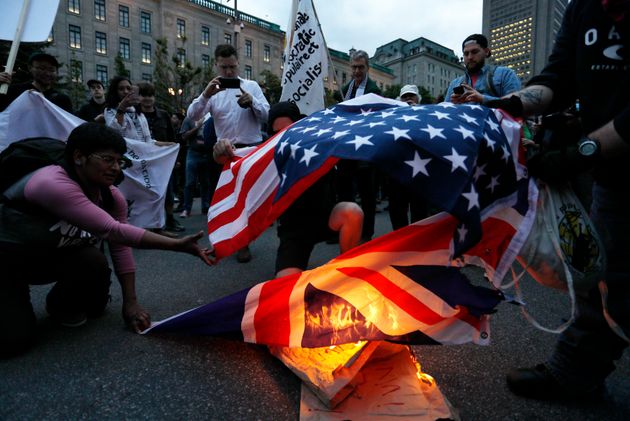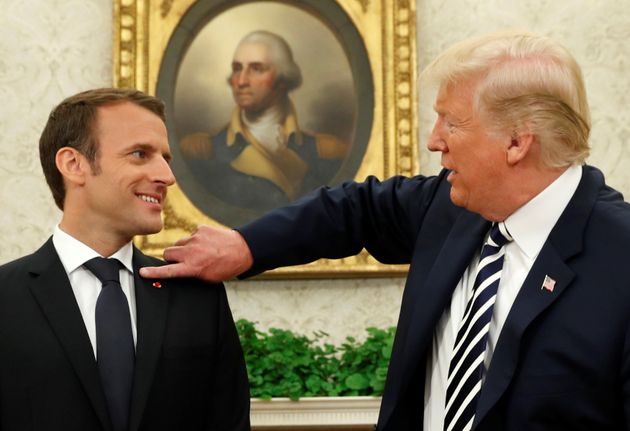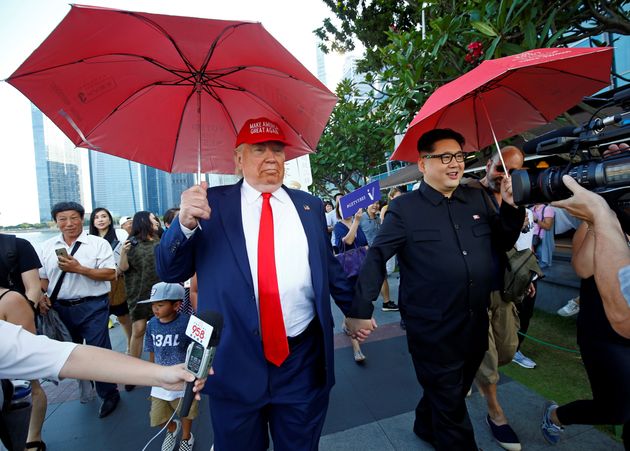
Donald Trump is expected to prompt a storm of confrontation as the G7 gets underway in Canada today, largely thanks to his steel tariffs.
The US President has been heavily criticised for not exempting the EU and Canada from his tariffs on steel and aluminium imports.
But he has also drawn the ire of the international community for pulling out of the Iran nuclear deal, not to mention withdrawing from the Paris Climate Agreement last year.
Climate change is one of five key themes at the G7, but the White House has already said Trump will leave the summit early Saturday before sessions on the environment are due to begin.
Even Trump’s previously chummy buddy, French President Emmanuel Macron, sent a few barbs his way to the remote Quebec location for the summit, via Twitter.
Thanks to Trump’s isolationism, the G7 has been dubbed the “G6 plus one”, and Macron has suggested the six other nations involved shouldn’t “mind signing a six-country agreement”.
French Finance Minister Bruno Le Maire told reporters last week: “What this G7 is going to show is that the United States are alone against everyone, and especially alone against their allies.”

So what is the G7, anyway?
The G7 – short for “Group of Seven” – summit is being held over two days in Quebec, at a luxury castle in the mountains.
It involves the US, Canada, France, Germany, Italy, Japan and the United Kingdom plus the European Union (which is not technically part of the G7 but participates) – signalling the seven of the largest advanced economies in the world.
It is usually a cheerful and informal demonstration of shared purpose and responsibility – and many photo opportunities – but many of the world leaders involved hit out at Trump before it even started.
What’s on the agenda?
The Government hosting the summit typically selects a set of themes that are non-controversial as possible, then couch them in vanilla language that everyone can get behind, CBS wrote in a preview of the summit.
The Charlevoix agenda this weekend covers five key themes:
• Investing in growth that works for everyone
• Preparing for the jobs of the future
• Advancing gender equality and women’s empowerment
• Working together on climate change, oceans and clean energy
• Building a more peaceful and secure world
Having pulled out of the Paris Climate Agreement, the Iran nuclear deal, the Trans-Pacific Partnership and imposing 25% and 10% tariffs on the metal imports from Europe, Mexico and Canada, Trump is already at odds with much of the agenda.
The Bromance that went bitter…

Much was made of Trump’s burgeoning bromance with Emmanuel Macron after the pair were pictured fawning during the French President’s visit to Washington in April.
While Macron has described his US counterpart as a “friend”, he pulled no punches ahead of the G7, telling reporters: “Maybe the American president doesn’t care about being isolated today, but we don’t mind being six, if needs be.
“Because these six represent values, represent an economic market, and more than anything, represent a real force at the international level.”
In what’s been seen a jab directly at Trump, he added: “Nobody is forever.”
Trump struck back that France and Canada are hurting the US with unfair trade practices and taunted, “look forward to seeing them tomorrow”.
A tariff too far…
Trump’s meetings in Quebec are expected to be especially contentious with Macron and Canadian Prime Minister Justin Trudeau, after the US President reportedly had angry phones calls with both men, as well as British Prime Minister Theresa May, over tariffs.
Trump even erroneously accused Canada of burning down the White House in the War of 1812 when he talked to Trudeau, HuffPost US reported.
Trump cited “national security” issues in imposing the tariffs which the UK Government has dismissed. It has also branded the measure “illegal”.
On Wednesday, Senator Bob Corker introduced legislation that would block the president from imposing tariffs on national security grounds without congressional approval.
Come on in, Kim

But while Trump is annoying his key allies, he’s also set to meet another world leader he’s had even more heated exchanges with – North Korean leader Kim Jong Un.
The two leaders are set to meet on the morning of 12 June at the Capella Hotel on the Singaporean resort island of Sentosa.
Trump is hoping to get Kim to agree to shut down his nuclear weapons programme in what will be a monumental win for the president who last year was locked in a war of words with Kim that some feared would escalate into a world war.
The US president is also working to repair relations with China, with the White House on Thursday announcing a deal with the country to lift sanctions against its massive technology company ZTE, allowing it to do business again with US firms.
“The traditional definition of allies is certainly being called into question,” Douglas Rediker, executive chairman of the financial advisory firm International Capital Strategies, told The Washington Post.
“If you look at it holistically, then it doesn’t make sense.” But he said it’s “consistent” for a president driven by the “political imperative of being seen as cutting a big deal on a big issue.”